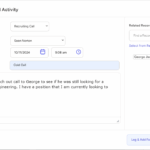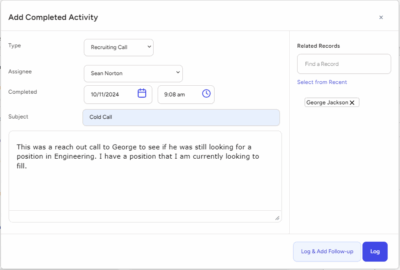The future of work is rapidly evolving, and technology is playing a significant role in shaping the way we work. The digital age has brought about tremendous advancements in technology, changing the way we communicate, collaborate, and access information.
In this guide from Top Echelon Recruiting Software, we will explore the future of work, how technology is changing the way we work, and what it means for HR.
The Future of Work
The future of work is marked by a shift towards a more flexible and agile workforce. This includes an increase in remote work, freelancing, and the gig economy. The rise of technology has enabled us to work from anywhere in the world, breaking down traditional barriers and creating a more diverse and global workforce.
Remote Work and the Gig Economy
The COVID-19 pandemic accelerated the adoption of remote work, and this trend is likely to continue in the post-pandemic world. Companies have realized the benefits of remote work, such as cost savings on office space, access to a broader talent pool, and increased employee satisfaction. Remote work tools, such as video conferencing, project management software, and cloud-based collaboration platforms, have become essential in facilitating this shift.
Freelancing and the gig economy are also on the rise. Platforms like Upwork, Fiverr, and Toptal have made it easier for professionals to find freelance work and for companies to hire skilled workers on a project basis. This trend is creating a more dynamic labor market, where individuals can take on multiple projects and work with different companies simultaneously.
Focus on Skills and Innovation
As technology continues to evolve, there will be a greater need for workers with specialized skills, such as data analytics, artificial intelligence, and machine learning. This means that workers will need to be continually learning and adapting to new technologies and innovations. The demand for lifelong learning and continuous professional development is becoming more critical than ever.
Educational institutions and online learning platforms are responding to this demand by offering more flexible and accessible learning opportunities. Massive Open Online Courses (MOOCs), coding bootcamps, and professional certification programs are becoming increasingly popular as individuals seek to upskill and reskill to stay relevant in the job market.
Automation and Artificial Intelligence
The rise of automation and artificial intelligence (AI) is transforming many industries. Automation refers to the use of technology to perform tasks without human intervention, while AI involves the development of systems that can mimic human intelligence. These technologies are being used to perform routine tasks, freeing up workers to focus on higher-level tasks that require human expertise.
In manufacturing, robots and automated systems are improving efficiency and productivity. In healthcare, AI-powered diagnostic tools are assisting doctors in making more accurate diagnoses. In finance, AI algorithms are being used for fraud detection and risk management. The potential applications of automation and AI are vast, and their impact on the workforce will be profound.
How Technology is Changing the Way We Work
Technology is transforming the way we work in many ways, including collaboration, productivity, flexibility, and accessibility.
Collaboration
Collaboration is transforming the way we work and the future of work. In the past, work was often done in isolation, with employees working independently on tasks and projects. However, with the rise of technology and the growing need for teams to work together across geographies and time zones, collaboration has become a key aspect of modern work.
Collaboration tools such as video conferencing, instant messaging, and file-sharing platforms allow teams to work together seamlessly, regardless of their location. These tools enable real-time communication and collaboration, making it easier for teams to share ideas, make decisions, and solve problems.
Co-working spaces and project-based work are also becoming more common. Co-working spaces allow individuals and teams to work together in shared workspaces, creating opportunities for collaboration and networking. Project-based work, where teams come together to work on specific projects, is becoming increasingly popular as organizations look for ways to work more flexibly and efficiently.
Productivity
Productivity is transforming the way we work and the future of work. In the past, productivity was often measured in terms of the amount of time employees spent working. However, with the rise of technology and new approaches to work, productivity is now being measured in terms of outcomes and results.
One of the key ways that productivity is transforming the way we work is by enabling greater flexibility in work arrangements. With the rise of remote work and telecommuting, employees are able to work from anywhere, at any time. This has enabled employees to achieve greater work-life balance, while still achieving their productivity goals.
Productivity tools such as project management software, communication platforms, and automation technologies are enabling teams to work together more efficiently and effectively. These tools help organizations achieve greater levels of productivity while creating a more collaborative and dynamic work environment.
Flexibility
Technology has enabled greater flexibility in the workplace and is changing the way we work. In the past, employees were expected to work a traditional nine-to-five schedule, often in an office setting. However, with the rise of technology, employees are now able to work from anywhere, at any time, enabling greater flexibility in work arrangements.
Remote work and telecommuting have become more common, thanks to communication platforms such as video conferencing and instant messaging. These tools enable employees to collaborate with colleagues and work together on projects, regardless of their location. This has reduced commuting time and improved work-life balance for many workers.
Mobile devices, such as smartphones and tablets, have also contributed to greater flexibility in the workplace. Employees can access work-related information and communicate with colleagues from anywhere, at any time, allowing them to stay connected to their work even when they are away from their desks.
Accessibility
Technology has made it easier for workers with disabilities to access employment and is changing the way we work. In the past, workers with disabilities faced significant barriers to employment, such as inaccessible work environments and a lack of accommodations. However, with the rise of technology, these barriers are being overcome, enabling workers with disabilities to access employment opportunities and contribute to the workforce.
Assistive technology, such as screen readers and speech recognition software, can assist individuals with visual or hearing impairments in accessing information and communicating with colleagues. This has enabled workers with disabilities to participate fully in the workplace and contribute to the success of their organizations.
Remote work and telecommuting have also made it easier for workers with disabilities to access employment. By reducing the need for physical accommodations and enabling greater work-life balance, these work arrangements are helping to create a more inclusive workforce.
What It Means for HR
Technology has significantly impacted the way we work in the modern world. Over the past few decades, there has been a remarkable rise in the use of technology in the workplace, and this trend is expected to continue in the future. The rise of technology has created new job roles, work environments, and business models. As a result, Human Resources (HR) professionals have had to adapt to these changes and find new ways to support and manage their employees.
Supporting Remote Workers
One of the most significant impacts of technology on the workplace is the shift towards remote work. Advances in technology have made it possible for employees to work from anywhere, and this has become increasingly popular in recent years. Remote work offers many benefits to both employees and employers, including increased productivity, reduced commuting time, and a better work-life balance.
HR departments have had to adapt to this change by developing new policies and procedures to support remote workers. This includes providing the necessary tools and resources for remote work, such as communication and collaboration platforms, as well as offering training and support for employees to help them adapt to remote work.
Maintaining communication and collaboration between team members who may be working in different locations is also a key challenge for HR. This requires the use of technology to facilitate communication and collaboration, as well as the development of strategies to ensure that remote workers remain engaged and connected to their teams.
Automation and Training
Another way technology is changing the workplace is by automating certain tasks. Advances in artificial intelligence and machine learning have made it possible to automate many repetitive and time-consuming tasks, such as data entry, scheduling, and customer service. This has allowed companies to streamline their operations and reduce the need for human labor in certain areas.
HR departments have had to adapt to this change by developing new training programs to help employees acquire the skills needed to work with automated systems and technologies. This includes training in data analytics, artificial intelligence, and machine learning, as well as providing opportunities for continuous learning and professional development.
Recruiting and Hiring
Technology is also changing the way we hire and recruit employees. The rise of social media and online job boards has made it easier for companies to find and attract talent from around the world. HR departments can now use data analytics and predictive modeling to identify the best candidates for a job and create targeted recruitment campaigns.
This has led to a more diverse and inclusive workforce, as companies can now reach a wider pool of candidates and eliminate biases that may have existed in the past. HR professionals must continue to leverage technology to improve the recruitment and hiring process, ensuring that they are attracting and retaining the best talent.
New Job Roles and Career Paths
Technology has also created new job roles and career paths. For example, the rise of e-commerce has led to the creation of many new jobs in logistics, warehousing, and transportation. Similarly, the growth of social media has created new jobs in digital marketing and social media management.
HR departments have had to adapt to these changes by developing new job descriptions and finding new ways to train and develop their employees to meet the demands of these new roles. This includes providing opportunities for employees to upskill and reskill, as well as offering career development programs to help employees advance in their careers.
Managing Work-Life Balance
One of the biggest challenges that HR departments face in the age of technology is managing the work-life balance of their employees. Technology has made it easier for employees to stay connected to their work even when they are not in the office, and this can lead to burnout and stress.
HR departments have had to find new ways to support their employees’ mental health and well-being by offering flexible work arrangements, encouraging breaks, and providing resources for stress management. This includes offering wellness programs, mental health support, and opportunities for employees to take time off to recharge.
The Future of Work
The future of work is marked by a shift towards a more agile, diverse, and innovative workforce. Technology is playing a significant role in shaping this future, enabling us to work more flexibly, collaboratively, and productively. As technology continues to evolve, it will create new opportunities and challenges for HR professionals.
HR departments must remain agile and adaptable, developing new policies and procedures to support remote workers, leveraging technology to improve the recruitment and hiring process, and providing opportunities for continuous learning and professional development. By doing so, they can ensure that they are supporting the growth and success of their organizations in an ever-changing world.
In conclusion, the future of work is rapidly evolving, and technology is at the forefront of this transformation. By embracing technology and adapting to these changes, HR professionals can help their organizations thrive in the digital age. The future of work is bright, and with the right strategies and tools in place, we can create a more flexible, inclusive, and productive workforce for the years to come.








